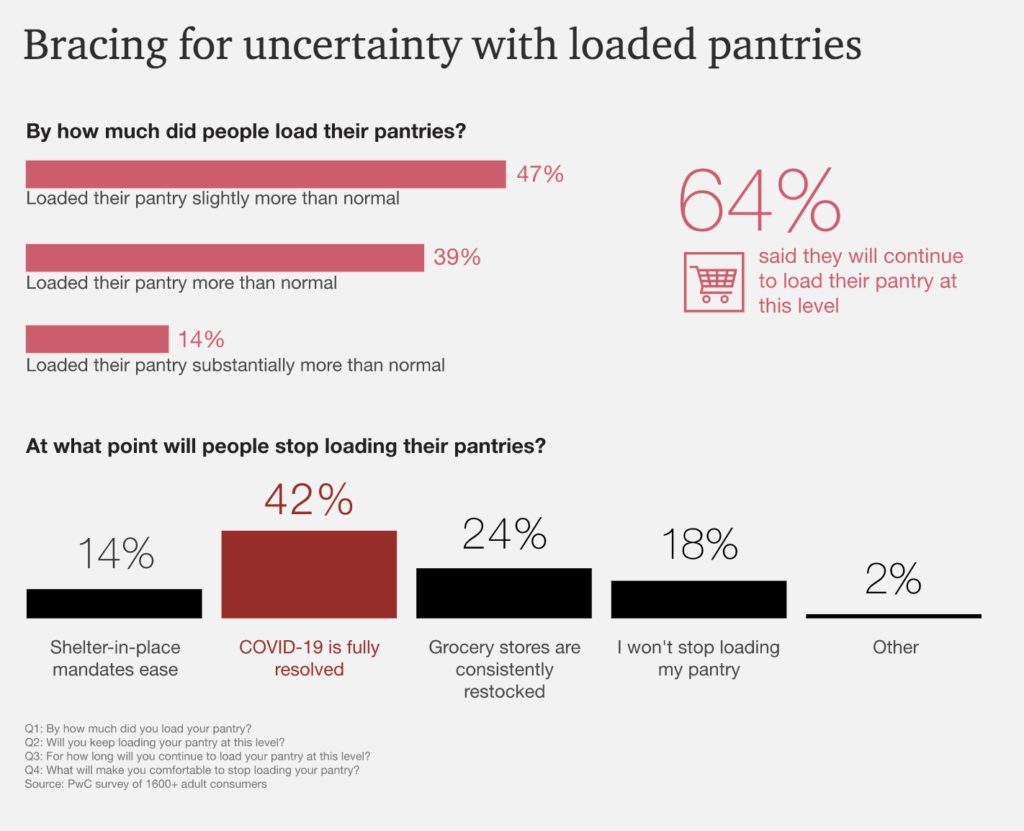
Prices for food at home are expected to increase 2.5 to 3.5% this year, according to the latest USDA forecast. That represents the biggest increase since 2011.
The overall increase will largely be driven by the prices of meat, poultry, eggs, and dairy, all of which are expected to grow at a rate higher than their 20-year historical average.
- Meats: +5.0 to 6.0%
- Beef and veal: +7.5 to 8.5%
- Pork: +4.0 to 5.0%
- Other meats: +2.5 to 3.5%
- Poultry: +2.5 to 3.5%
- Eggs: +8.0 to 9.0%
- Dairy products: +3.0 to 4.0%
The only category expected to see a decrease for the year is fresh fruits, for which the USDA expects prices to go down about 0.5-1.5%.
These price increases come at a challenging time for consumers, who have been loading their pantries since March and plan to continue doing so. In April, a PwC consumer sentiment survey found that all consumers were loading their pantries more than normal, and 42% will continue to do so until COVID-19 is fully resolved.
These results suggest that even as restaurants start to open, consumers are likely to continue spending more on food at home. PwC also found that 66% of people are reluctant to eat at restaurants, while only 21% reported not liking or being tired of cooking at home.
For food brands looking to launch new products, this increase in grocery shopping presents an opportunity. In the PwC study, many consumers indicated that they were buying new brands, even when their usual brands were available. This was true for non-perishable food (36%), perishable food (37%), fresh prepared meals (44%), non-alcoholic beverages (47%), and alcoholic beverages (54%). For examples of how food companies are approaching new product launches at this time, read Food Innovation During and After COVID-19.
The price of food away from home is also forecast to rise — between 1.5 and 2.5%. That brings the forecast for all food to 2.0 to 3.0% for the year.










